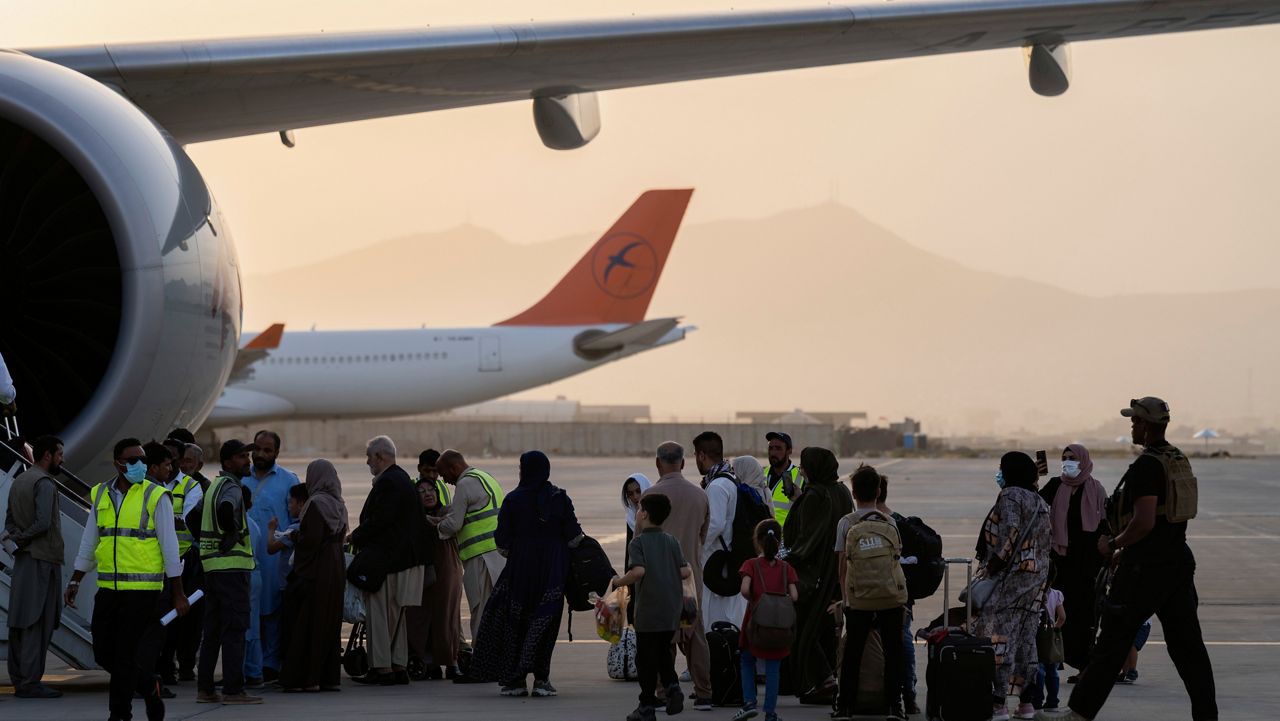There are less than a dozen qualified U.S. citizens seeking to leave Afghanistan nearly three months after the chaotic August evacuation from Kabul, the State Department said Monday in an update on the continued but infrequent flights out of the Taliban-controlled country.
Since Aug. 31, the department has slowly worked its way through the list of American citizens and residents looking to leave on charter or commercial flights, since the Taliban has blocked many airlines from operating in Afghanistan.
In the last three and a half months, 479 Americans and 450 lawful permanent residents have left on U.S.-assisted flights, the State Department said in a Monday update.
Officials are also in contact with fewer than 12 remaining citizens who are eager to depart and have the necessary documents.
In addition, the U.S. has also helped more than 2,200 Afghans leave the country in recent months, many of whom the State Department said were either special visa holders or applicants based on their past work with the United States military, such as interpreters.
And thousands more have flown out on privately-sponsored charter flights in the weeks since August, though the State Department did not provide those numbers.
To date, more than 74,000 Afghans have arrived in the U.S. — most as a result of the August evacuation — where they were first hosted on military bases around the country in places like Wisconsin, Virginia and Texas.
After an initial slow start, about half of those Afghans have now moved off the bases to resettle in various states.
A handful of measles cases prompted a mass vaccination campaign among evacuees, one of the main reasons for the slow process at first, the White House coordinator for the resettlement effort told Spectrum News earlier this year.
Affordable housing was another challenge that former Delaware Gov. Jack Markell worked to address by connecting states, resettlement organizations, charities and more, though his role as coordinator is over at the end of the year.
The Biden administration has funding to resettle up to 95,000 Afghans by next September, and many will become permanent residents if they qualify and once they go through the application process.
Meanwhile, the U.S. has faced criticism for the lack of planning around the evacuation that left behind thousands of Afghans qualified for a U.S. visa, many who worked alongside American troops.
And thousands more Afghans evacuated in August are stuck in overseas locations around the world, including many in the United Arab Emirates who may not qualify for U.S. entry since they left Kabul on chartered flights instead of U.S. military aircraft.
Under current qualifications, the State Department said Monday that around 3,000 people — Afghans, U.S. citizens and residents — were in third country locations waiting to be processed into the United States.



